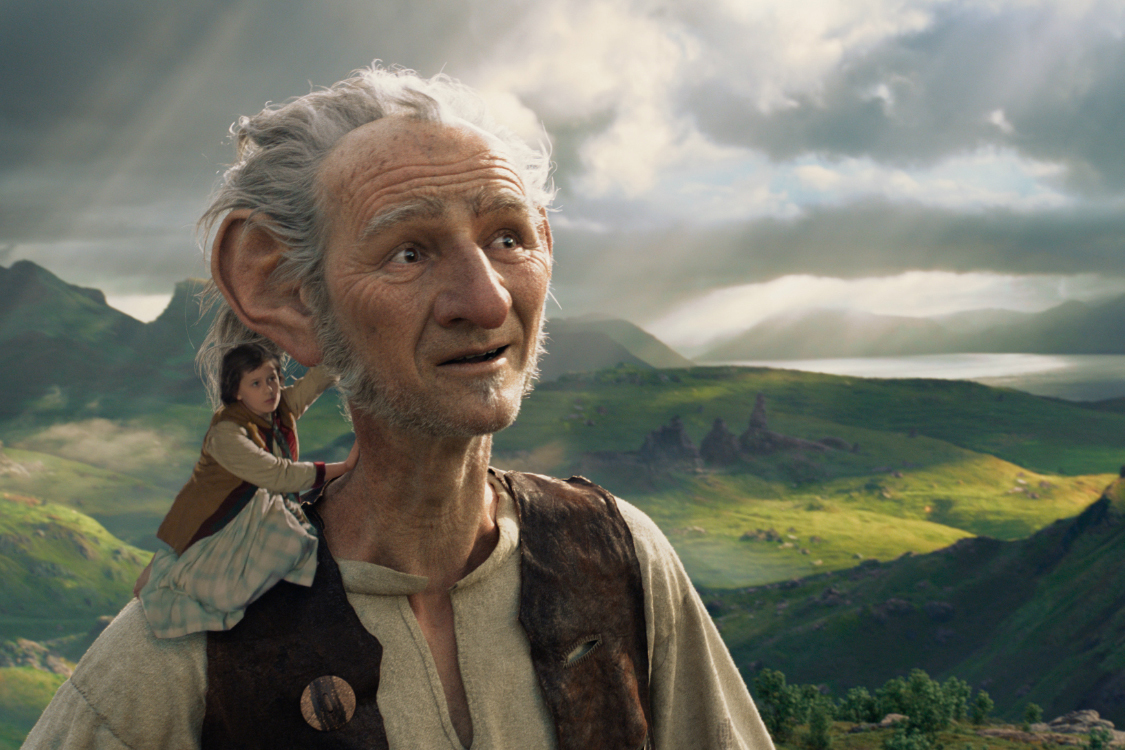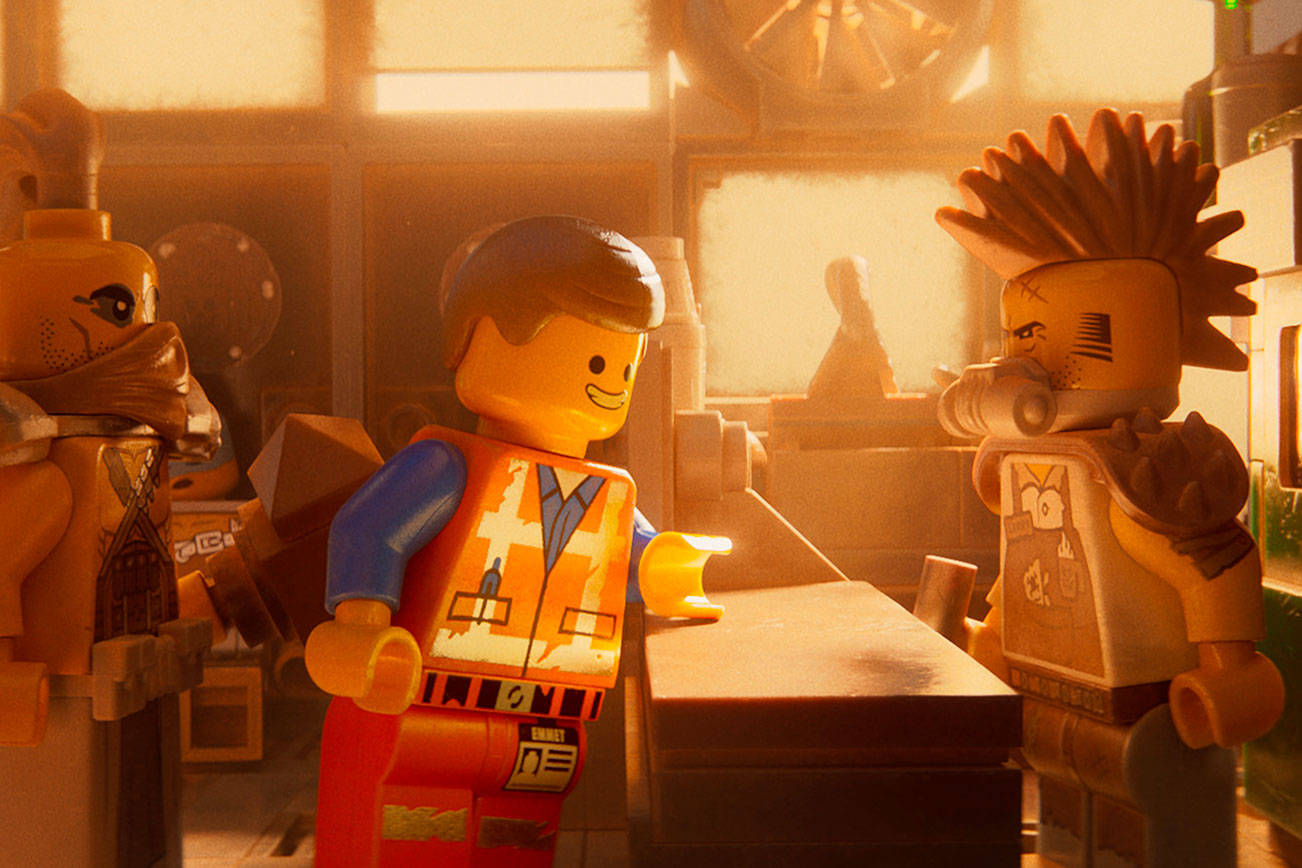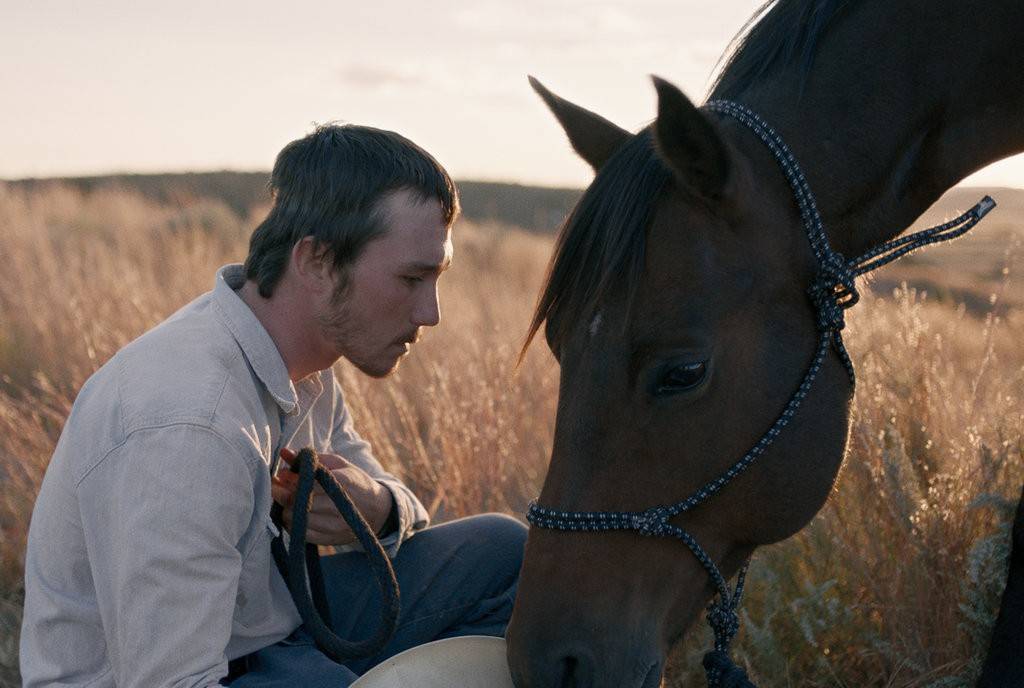Just after we’ve first seen the Big Friendly Giant—teased in a series of shadowy glimpses as he lurks about a London street at night—he must flee the city and return to Giant Country. We watch this creature, as tall as a small building, as he lopes through town and country, full steam ahead, his long skinny legs galloping across an acre at a time. It’s a thrilling sight. Perhaps many filmmakers could make this moment soar, but when you see it you will know that this particular flourish could come only from Steven Spielberg. The way the distance of the camera allows us to see the BFG from head to gnarly toe, the predawn light barely glimmering on the horizon beyond, the everyday touch of power lines whipping past—everything in this brief shot suggests Spielberg’s talent for amassing details so that they generate giddiness across your eyeballs.
In The BFG, a new Disney production, Spielberg mines Roald Dahl’s 1982 kid-lit classic. It’s the adventure of an orphan girl named Sophie (spunky Ruby Barnhill), plucked from her unhappy orphanage by the Big Friendly Giant (Mark Rylance). In Giant Country, the BFG tries to protect Sophie from the predations of larger, human-eating giants while introducing her to the art of dream-collecting. There’s also, eventually and thankfully, a long slapstick visit to the Queen at Buckingham Palace, where the BFG’s uncouth country manners are politely tolerated until he offers Her Excellency a glass of frobscottle (a green drink with bubbles that go down instead of up, and which causes violent flatulence even in royals).
The film is mostly charming, and (no surprise) technically accomplished. I assume that most of what we see is digitally painted, including the BFG himself. Rylance, the legendary stage actor who won a well-deserved Oscar for Spielberg’s Bridge of Spies, does the motion-capture thing, his body and facial expressions used to create the animated character (though that glorious voice, twisting its way around Dahl coinages like “delumptious” and “phizzwizards,” is all his own). Rylance makes a warm heart for the movie, and he’s too good to let things go squishy. When they have a chance, actors who are not recombined as animated beings (Penelope Wilton as the Queen, Rebecca Hall as her lady-in-waiting) also come off nicely.
Other aspects of The BFG make less of an impression, perhaps because of that digital landscape. It is a magical idea to have Sophie chase after floating dreams (neon-colored puffs that blow through an upside-down world), but the images’ computerized seamlessness makes it hard to gain any traction. You almost want Spielberg to have to wrestle with a rubber shark again. Meanwhile, the comical battles of the larger giants are lumbering rather than whimsical. Here Spielberg is closer to his all-animated Adventures of Tintin, in which the ability to do absolutely anything led to incredibly elaborate (and frankly exhausting) Tinkertoy action sequences. Spielberg’s always had a weakness for that kind of thing—dare we summon the ghost of his most notable flop, 1941?
The BFG is a decent test case for asking whether the digital mode of moviemaking has passed the point of fatigue. I wasn’t being totally glib about that rubber shark from Jaws; there was a frisson that used to happen when we had to imagine the huge effort that went into making movie magic, from a tornado lifting a Kansas house heavenward to an army of skeletons rising out of the earth with their swords a-clatter. We don’t wonder about that anymore; it’s CGI. Digital effects have wrought many marvels, and I wouldn’t want to give any of that up. But the mixed results for even as imaginative a wonder-maker as Steven Spielberg suggest that it may be time for a reset on how we create impossible worlds. Because right now it feels as though things are just a little too easy. The BFG, Rated PG, Opens Fri., July 1.
film@seattleweekly.com






